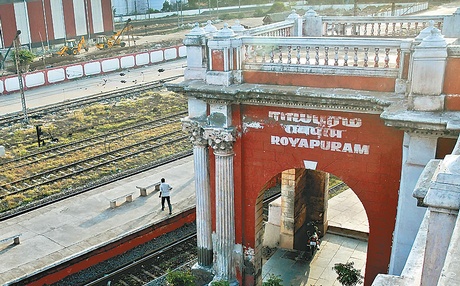
It was just after Vasco da Gama discovered the sea route to India in 1498, throwing doors open for Indo-European trade. Since it was difficult for Portuguese women to travel to India, the Portuguese men were allowed to marry Indian women, specifically only those who were fair and from good families.
The marriage resulted in descendants of mixed race, who came to be known as Lucitanians. Somewhere around the same time, the Muslims had already entered India to rule a considerable part of the country.
Harry MacLure, editor-publisher of Chennai-based Anglos in the Wind, an international magazine for Anglo Indians, and Anglo Ink that is engaged in encouraging Anglo-Indian literature, reveals, “In places like Santhome, there was a visible Lucitanian population and it is said that the British was surprised to see the non-Indian looking crowd. In fact Anglo-Indian is a relatively newer term. They were known as Eurasians. Later those of European-Indian origin came to be classified under the Anglo-Indian category. It is actually fallacious to believe that Anglo-Indians are only British descendants.”
Former MP and Tamil Nadu MLA Beatrix D’Souza points out to an interesting Anglo-Indian connect to French Governor Dupleix, in one of her articles for Anglos In The Wind. Dupleix married a Tamil-Portuguese widow from Mylapore called Jeanne Vincens.
Referred to as Creole, with a Portuguese father, she could be classified as one of the earliest Anglo-Indians. Santhome, she says, earlier known as San Thome named after one of the 12 apostles of Jesus Christ, St Thomas, became one of the first settlements for Lucitanians.
The locomotive and carriage workshops of the Madras Railway at Perambur were a centre for several Anglo-Indians, making them a significant part of the workforce. Even in other government sectors like telegraph, customs and forest department they were found in large numbers.
With the advent of railways, the Royapuram railway station was built in 1856, becoming the first railway station in South India. It was a strategic spot for the British operations due to its proximity to Fort St George. Royapuram railway station remained a hub for railway operations till the Central Railway Station replaced it in 1907. Found in large numbers in other areas like Perambur, Purasawalkam, Vepery, St Thomas Mount, Pallavaram and Aynavaram, their lives have always been intertwined with the railways.
“That became a pattern for settlement for Anglo-Indians, just like railway colonies came up next to railways yards,” adds MacLure, who is working with S Muthiah on a book that documents the 500-year-old history of the community.
It is said that during those days people set their watch according to the arrival time of the Bangalore Mail. D’Souza adds,” Those were the days of the Anglo-Indian train drivers who ensured that the train ran on time and as per schedule.”
source: http://www.newindianexpress.com / The New Indian Express / Home> Cities> Chennai / by Janani Sampath / ENS – Chennai / April 29th, 2013